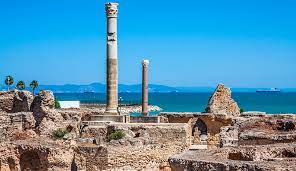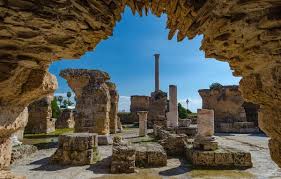The third IEEE International Conference on Signal, Control and Communication (SCC’23) will take place in hotel Paradis Palace, Hammamet, Tunisia. https://www.leparadispalace.com/
Hammamet is one of the most popular tourism attractions in Tunisia, because it has many tourist attractions, combining history and entertainment.
There are two ways to get to Hammamet by plane:
- From Tunis Carthage International Airport
To get Hammamet by taxi from the airport you need to take Touristic Taxi (White Taxi) or rent a car. (We recommend transport by Touristic TAXI. Fees are around 35€). Journeys are priced using the taxi meter or a fixed price can be agreed. http://www.transfert-aeroport-tunis.com/en/
- From Ennfidha International Airport
All information about transportation from the airport can be found here: http://www.enfidhahammametairport.com/en-EN/Transportation/Pages/AirportTrasnportation.aspx
We recommend transport by Touristic TAXI (White Taxi). Fees are around 22€. Journeys are priced using the taxi meter or a fixed price can be agreed.
Tunisian Currency
The Tunisian currency is the dinar (TD, TND), which has the following denominations:
Banknotes: 5, 10, 20 and 50 dinars
Coins: 5, 10, 20, 50, 100, 200, 500 millimes and 1, 2 and 5 dinars
Many hotels, even including some select supermarkets accept Euros. Currency exchange is available at all international airports in Tunisia. Currency exchange is also available at banks; especially many international banks have branches in Tunisia. The exchange rate is similar, but different in each bank and changes daily according to the interbank money market.
ATMs are, at least in the tourist areas and big cities, available in large numbers. The machines accept most credit and debit cards of VISA, MASTERCARD and MAESTRO (V-PAY cards are usually not accepted).
Electricity
The electric system is 220 Volt AC (50 Hz); otherwise, participants should carry a plug-adapter kit.
Main touristic places
Tunis Medina
The medina in Tunis boasts a stunning example of 9th century architecture, the Ez-Zitouna Mosque, as well as many other monuments dating back to the Ottoman Empire including the Hammouda Pacha Mosque, the Madrasa Slimania and the tomb of the princess Aziza Othmana. The Art Nouveau, Art Deco and Arabisance buildings around the medina are also worth checking out.
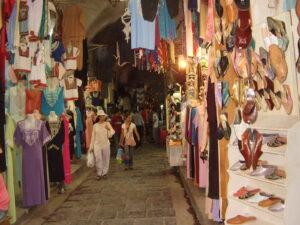
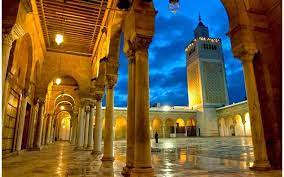
Bardo Museum
The most fabulous exhibition of mosaics in the world is found in Tunis, in the former palace of the Beys, the Bardo, completely renovated and extended in 2012. This museum possesses a unique collection of Roman artifacts to which have been added artifacts from across Tunisia’s history, from ancient Carthage to the Ottoman era. In the entrance, in a well of light, let yourself be entranced by the immense mosaic displaying mythological scenes around the god Neptune’s chariot. Then contemplate the strange goddesses of Carthage, the Hellenistic works of art drawn up off the coast of Mahdia, the marble statues which adorned the Roman temples. You will also discover the Jewish heritage of Tunisia and the mysterious stone slabs showing Numidian deities. The Islamic art of Tunisia has pride of place: astrolabes, precious manuscripts, ceramic goblets, without forgetting the rich decoration of the palace itself. But above all, you will not get bored exploring one by one the countless masterpieces of the Tunisian mosaic artists, which were famous throughout the Roman world. Realistic, full of life and finely nuanced, these scenes tell of the adventures of Ulysses and of work in the fields, the amphitheatre games and the gods of Olympus… a fascinating journey through time.
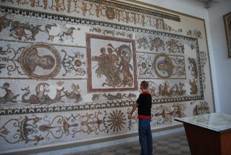
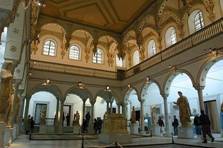
Carthage
Legend has it that Carthage (north of Tunis) was founded by the Phoenician Queen Elissa, also known as Dido, in 814 BC. Longstanding rivals of the Greeks, the Carthaginians – also known as the Punics – were in control of a network of trading posts in the Mediterranean, from Spain to Sicily. The Romans destroyed the city in 146 BC, then rebuilt it and made it the capital of the rich province of Africa. Some fragile remains of Punic Carthage can still be seen today: the areas where Mago and Hannibal lived and the Punic ports. The Roman ruins show the city’s opulence: the Baths of Antoninus, whose main room was 30 metres tall and whose cisterns had a capacity of 60,000m3, and the Basilica of Damous El Karita which was the largest in Africa, as well as many more.
